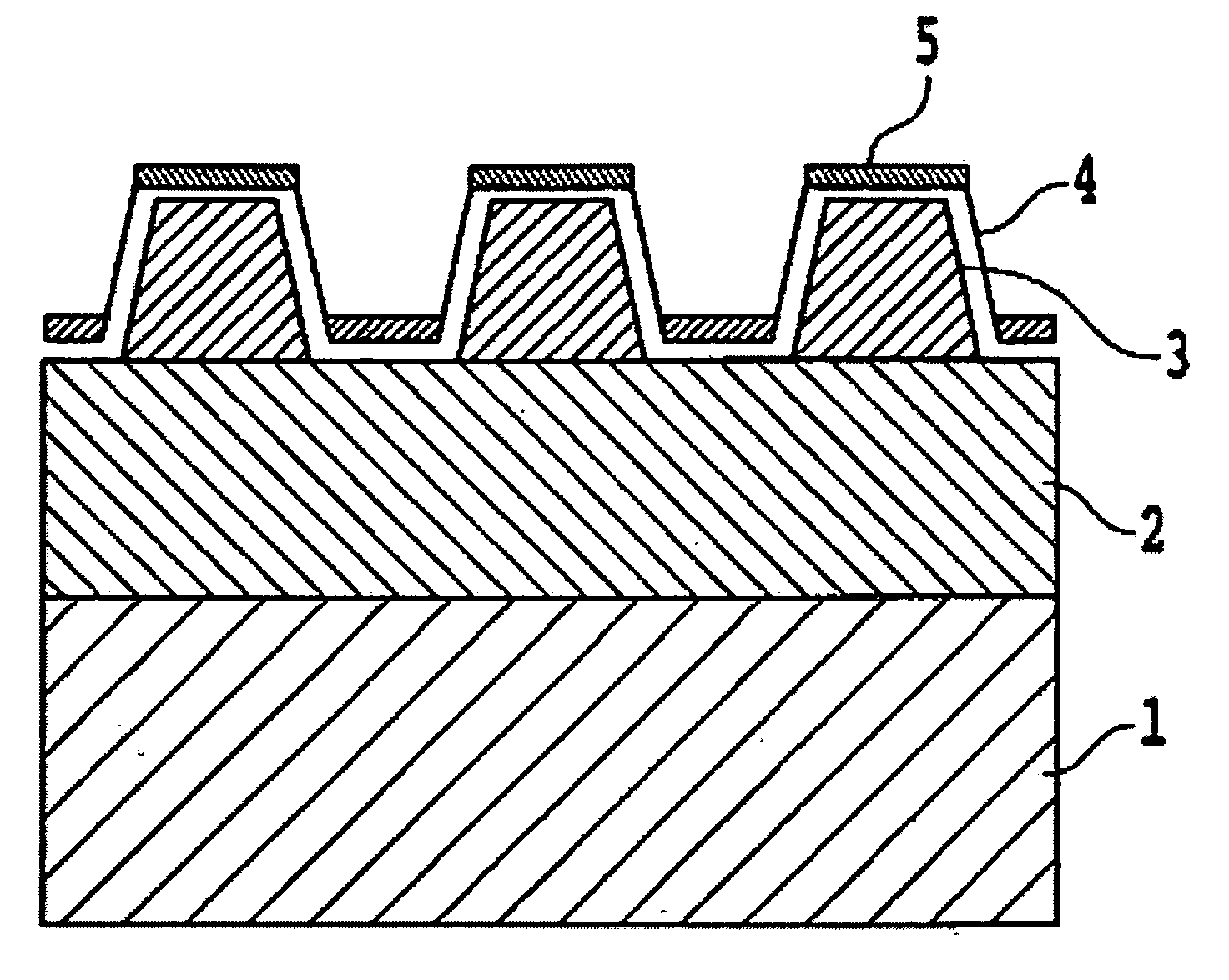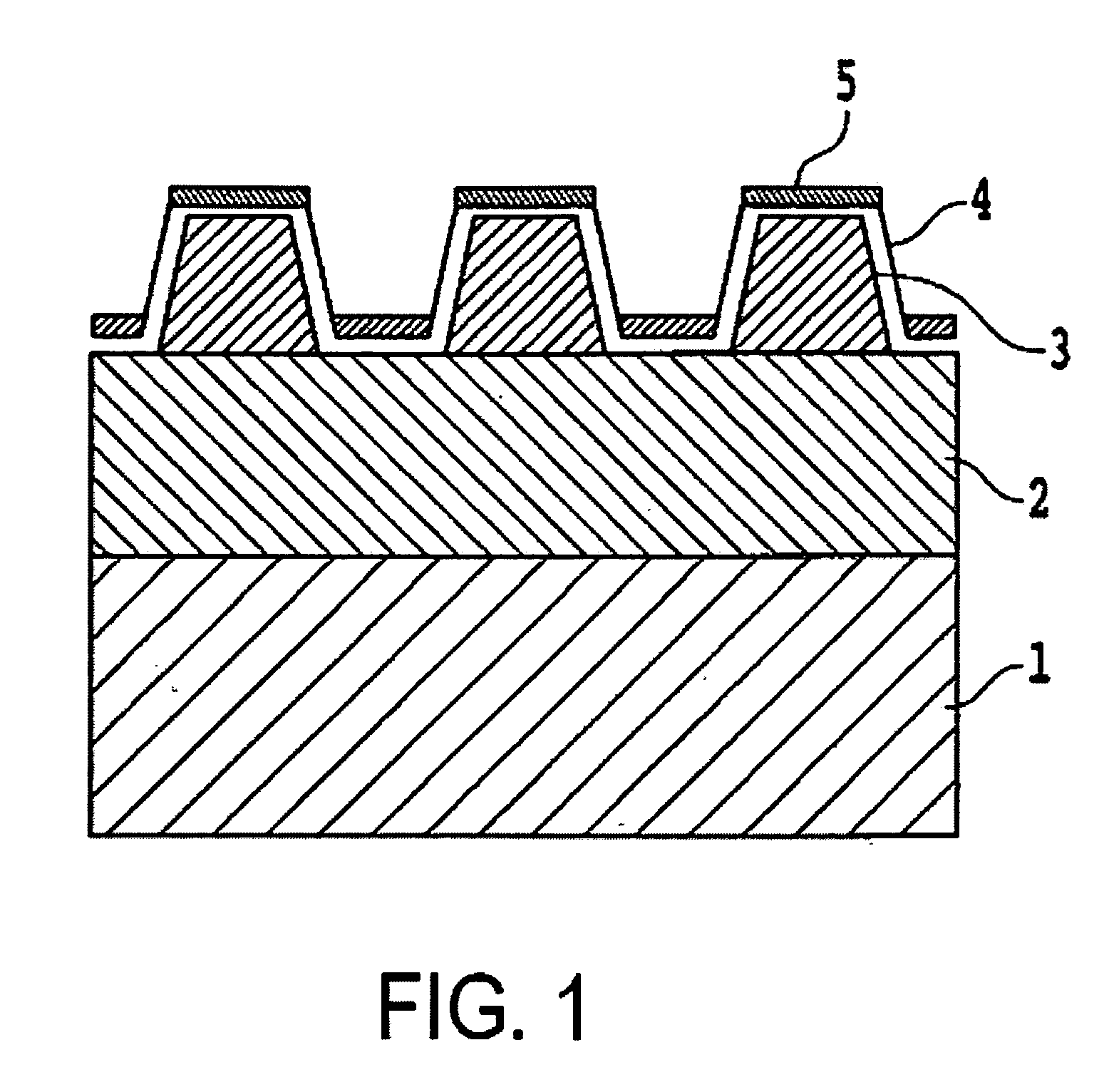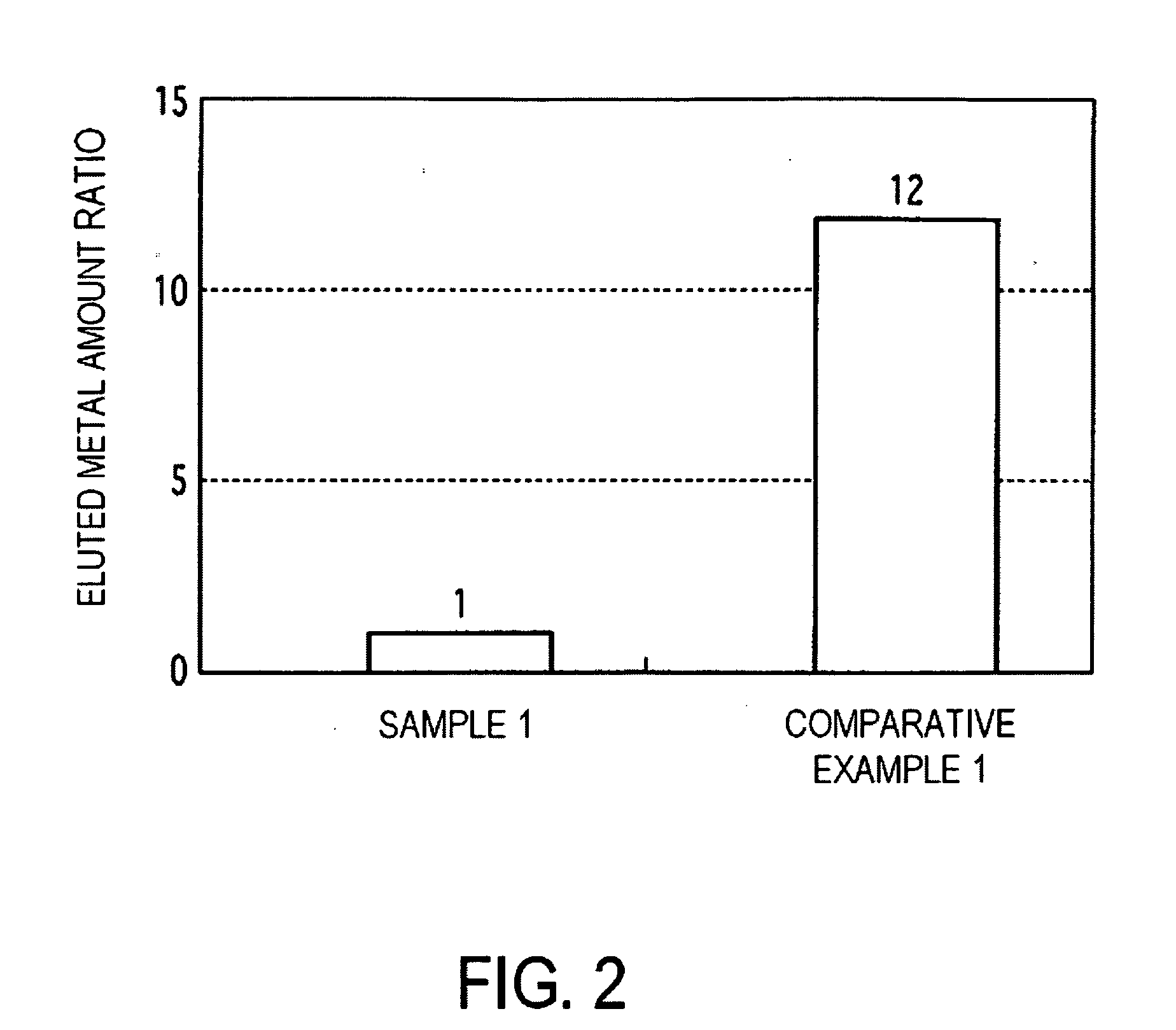Patterned magnetic recording medium and method for manufacturing same
a magnetic recording medium and patterned technology, applied in the field of magnetic recording mediums, can solve the problems of difficult to obtain all the desired characteristics from a protective layer, the protective layer in patterned magnetic recording media has not been studied, and the problem of not being able to achieve the desired characteristics, and achieve satisfactory sliding characteristics, adequate corrosion resistance of the magnetic layer, and high hardness
- Summary
- Abstract
- Description
- Claims
- Application Information
AI Technical Summary
Benefits of technology
Problems solved by technology
Method used
Image
Examples
example 1
Sample 1
[0048]An underlayer 2 of film thickness 30 nm, comprising a material containing at least one among Cr, Ti and Co, was formed by a sputtering method on a glass substrate 1. On this underlayer 2 was formed, by a sputtering method, a magnetic layer 3 of thickness 10 nm, comprising Co—Cr—Pt alloy. On the magnetic layer 3 was further formed, by the plasma CVD method, a temporary protective layer 4a of film thickness 4 nm comprising carbon.
[0049]Onto the temporary protective layer 4a thus obtained, a spin coater was used to apply by spin coating a UV-hardening etching resist (product name PAK-01, manufactured by Toyo Gosei) to a thickness of 40 nm, and after eliminating solvent at 80° C., a quartz mold, on which was formed a track-shape relief pattern, was pressed with a pressure of 0.1 MPa onto the surface of the applied film. After hardening the etching resist by irradiation with ultraviolet rays through the quartz mold, the quartz mold was removed, and a track-shape pattern for...
example 2
[0064]The same fabrication method as for Sample 1 in Example 1 was employed, except that the thickness of the magnetic layer 3 was 20 nm and the etch depth of the magnetic film 3 was 10 nm, to fabricate a patterned magnetic recording medium, in which the magnetic layer had a track-shape relief pattern with line widths of 60 nm, groove widths of 40 nm, and groove depths of 10 nm, the magnetic layer 3 existed in the convex pattern, in the layer below the convex pattern, and in the bottom portions of the concave pattern, and which had a first protective layer comprising DLC film and a second protective layer comprising ta-C film. The patterned magnetic recording medium thus obtained was subjected to sliding tests and then to metal elution tests, and results similar to those for Sample 1 of the above Example 1 were obtained.
example 3
[0065]After forming the underlayer 2 of thickness 70 nm comprising materials including at least one among Cr, Ti and Co, a UV-hardening etching resist was applied onto the underlayer 3, a quartz mold in which was formed a track-shape relief pattern was pressed against the etching resist applied film, the etching resist was hardened by irradiation with ultraviolet rays through the quartz mold, to form an etching pattern with pattern widths of 60 nm and pattern intervals of 40 nm, after which the underlayer 3 was etched along the etching pattern to form a relief pattern in the underlayer 3 having pattern widths of 60 nm, pattern intervals of 40 nm, and a pattern depth of 10 nm.
[0066]On the underlayer 3 with the relief pattern formed as described above, a magnetic layer 3 comprising a Co—Cr—Pt alloy was formed by evaporation deposition to a thickness of 10 nm, after which processes similar to those used in fabrication of Sample 1 in Example 1 were performed, forming on the magnetic lay...
PUM
| Property | Measurement | Unit |
|---|---|---|
| Width | aaaaa | aaaaa |
| Width | aaaaa | aaaaa |
| Width | aaaaa | aaaaa |
Abstract
Description
Claims
Application Information
 Login to View More
Login to View More - R&D
- Intellectual Property
- Life Sciences
- Materials
- Tech Scout
- Unparalleled Data Quality
- Higher Quality Content
- 60% Fewer Hallucinations
Browse by: Latest US Patents, China's latest patents, Technical Efficacy Thesaurus, Application Domain, Technology Topic, Popular Technical Reports.
© 2025 PatSnap. All rights reserved.Legal|Privacy policy|Modern Slavery Act Transparency Statement|Sitemap|About US| Contact US: help@patsnap.com



